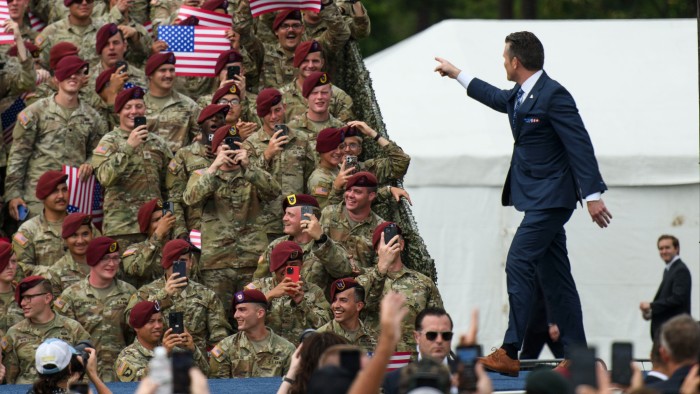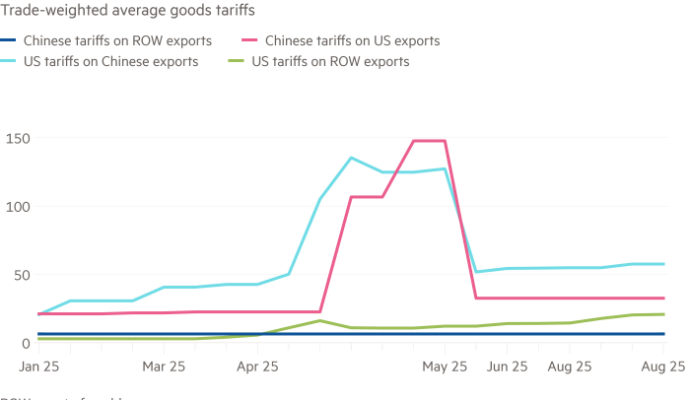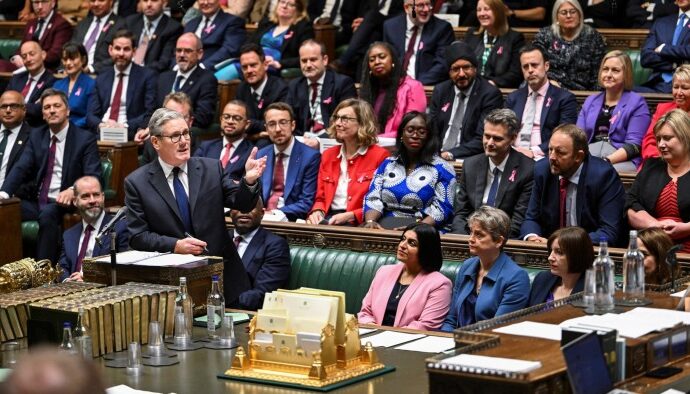
Unlock the White House Watch newsletter for free
Your guide to what Trump’s second term means for Washington, business and the world
The author is a Hoover fellow at Stanford University
Standing in front of the Pentagon, as a Metallica song blared in the background and drones buzzed around him, US secretary of war Pete Hegseth looked into the camera and promised to cut bureaucratic red tape, “unleashing American drone dominance” to “match capabilities to the threats of today”.
A few weeks later, he doubled down on technology, telling assembled generals: “This urgent moment of course requires more troops, more munitions, more drones, more Patriots, more submarines, more B-21 bombers. It requires more innovation, more AI in everything . . . more cyber effects, more counter UAS, more space, more speed.” Hegseth’s message was clear: the US is throwing technological caution to the wind.
This is good news for a department far too risk averse and set in its technological ways. But is it all for naught? Because at the same time the US invests in new military technologies, its soldiers are patrolling the streets of American cities, and training for counter-drug missions, immigration enforcement and domestic policing. In that same room of generals, President Donald Trump told his military leadership: “We are under invasion from within . . . After spending trillions of dollars defending the borders of foreign countries, with your help, we’re defending the borders of our country from now on.”
The problem for Trump’s new Department of War is that focusing on the enemy within directly competes with a military’s ability to use technology to combat the enemy without. Research shows that when militaries are focused on domestic threats, they are less likely to win conflicts against enemies abroad, no matter what technology they put on the battlefield.
First, and most obviously, sending troops to train on domestic missions takes time away from missions focused on external threats. So for example, when Trump told the assembled officers in Virginia that “I signed an executive order . . . for a quick reaction force that can help quell civil disturbances”, he is potentially diverting military training from how to use drones as part of an amphibious force defending against an island invasion in the Pacific. When the 2nd Battalion, 7th Marines, deployed this summer to Los Angeles, its commander had to quickly train the unit in non-lethal tactics — a mission set not prioritised in its recent pivot to Asia.
Even if they get the training required to integrate the new technology, there are reasons why a civilian administration focused on the enemy within might still limit training because of political concerns. For instance, for many years after the 1979 Islamic revolution the Iranian Air Force restricted training due to concerns that pilots (many of whom had been trained by western militaries under the Shah) would defect or attack the new regime’s centres of power.
Sometimes regimes concerned about political loyalty may also create command structures that limit unit independence and experimentation. This slows down decision-making during war and often makes operators less effective with new technology. For example, during the cold war, the Soviet Air Force relied on what was known as ground-controlled interception to direct fighters and bombers, requiring aircraft to check in with central commands to dictate operations. This made Soviet air forces inflexible and less lethal compared with western air forces, which let air units dictate their own tactics.
Finally, a government focused on the enemy within will hire and fire leaders based on political loyalty instead of technical or tactical competence. In a world where military technology requires complicated training and maintenance, this expertise deficit has direct implications for military technology and power. In a 1996 study of Iraqi air defences, political scientists Stephen Biddle and Robert Zirkle found that Saddam Hussein’s focus on political loyalty directly degraded air defence units’ ability to operate surface-to-air missiles.
Healthy democracies are more likely to win wars. A huge part of why that occurs is that their militaries are focused on external threats instead of a “war from within”. So, no, the Trump administration cannot just buy more and better military technology and still have one of the best militaries in the world. For many years, the US suffered from a sclerotic bureaucracy that stifled military technological innovation. Trump promises to overcome that bureaucracy, but his efforts could lead to a military with all the best weapons and none of the training, operations or personnel to use them effectively. Worse, it could end up with a well-equipped military optimised for domestic warfare and perilously vulnerable to enemies abroad.


